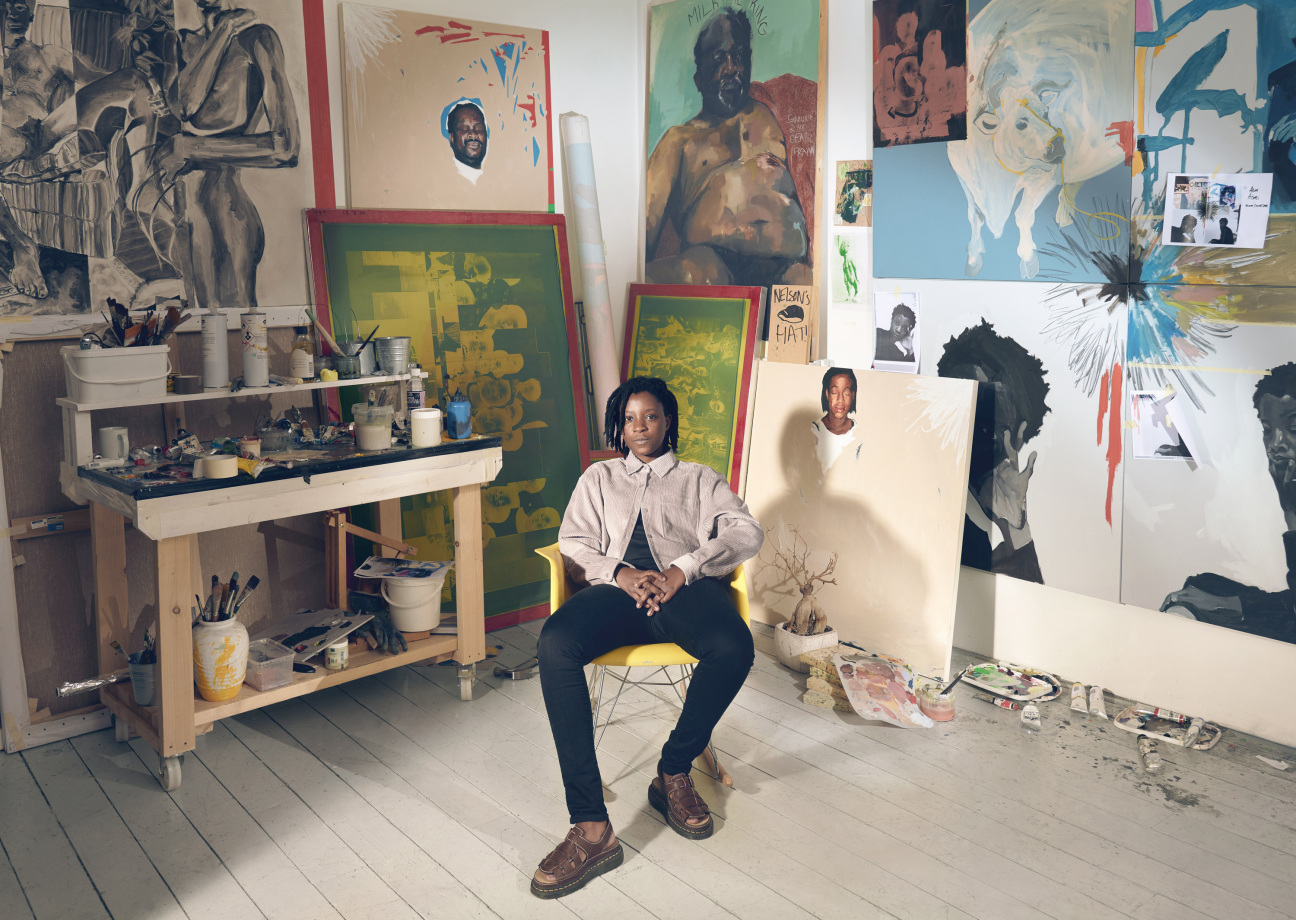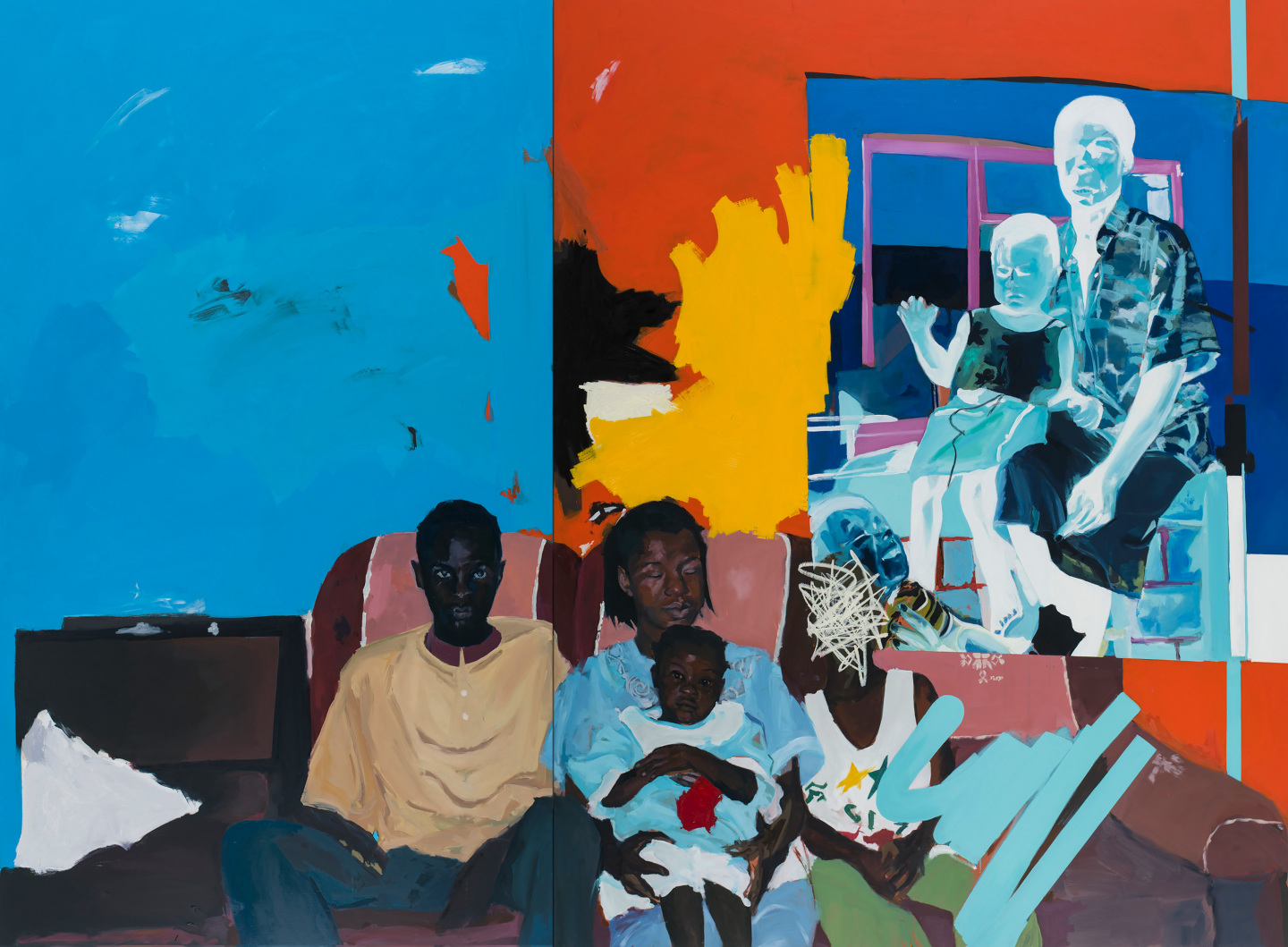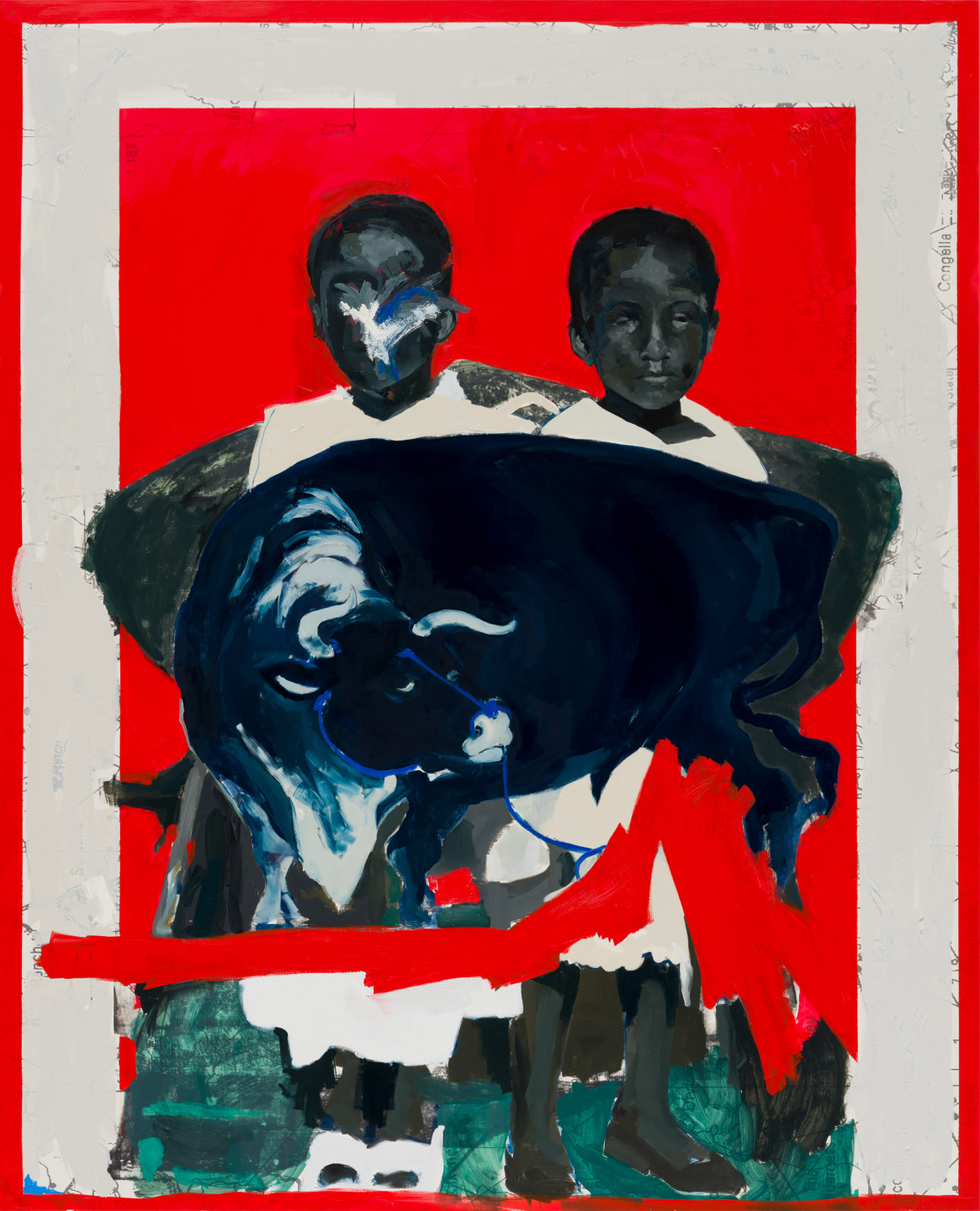Warm, gray tones convey the delicate features of a child’s face—tightly pursed lips, beady eyes—while also drawing attention to their own materiality, as thick brushstrokes construct an arresting visage. The figure’s opaque expression functions like a point of entry into Kudzanai-Violet Hwami’s large-scale work in acrylic and oil on canvas, The wedding of the astronauts 3, 2022, which is currently on view in the 59th Venice Biennale. Dark skin is accentuated by contrast with the neck of a beige garment and vibrant swathes of red behind. The rest of the composition enacts forms of obscuring: as the face of another similarly clad figure is obstructed by a cluster of dashes, a bluish bull layered atop the two children conceal them from view and the lines and labels of a map around the periphery of the painting are veiled by red and tan bands of paint that leave the text mostly indecipherable.
This play with the friction between a declarative presence and forms of concealment and indeterminacy is emblematic of the London-based, Zimbabwean artist’s reckoning with what it means to construct and present an identity, both in painting and in the world at large. Hwami problematizes identity-driven painting, attempting to frustrate its expectations by fracturing her picture planes and employing visual markers of censorship—taking on what she has called the supposed inescapability of identity when you are a minority, especially if you are making figurative painting.

Hwami develops her fragmented picture planes as a form of collage. “To me, painting is a practice that allows me to remain curious,” she says, “and the act of using collage is helpful as a reminder of the fragility of the human condition.” She is particularly motivated by parsing her own heritage—born in Zimbabwe, she moved to South Africa at the age of nine and to the UK in her late teens—as her painting becomes a mode of staging a formal dialogue between her diasporic and digital experience. Like looking back to her native Zimbabwe, by referencing its Shona Sculpture tradition or taking old family photos as a starting point, Hwami also culls images from the internet, as well as allusions to subcultures she initially accessed there, from emo culture to Trans and queer porn. The latter informed her repeated depiction of men without penises, a body she initially conceived as a form of self-portrait, in works like Jonga 1, 2021, and Trauma Pond 3, 2022.
Other recurrent motifs are also present in Hwami’s work, including banana leaves and yellow, devilish horns, which she employed as a kind of signature detail in her earlier work. While Hwami continues to draw inspiration from memories, as well as research trips to southern Africa, her painting has also been indelibly shaped by encounters with the work of artists like Jenny Saville, Henry Taylor, Kerry James Marshall and Michael Armitage during her studies in England. The Robert Rauschenberg exhibition at the Tate Modern in 2017 was a particular watershed moment for Hwami. She graduated from the Wimbledon College of Arts that year and recently received her MFA at the Ruskin School of Art in Oxford.



The city of Venice has also played a significant role in Hwami’s emerging career, as she was one of the youngest artists to ever participate in the Biennale, as part of a four-artist presentation in the Zimbabwe Pavilion in 2019, and was included in this year’s “The Milk of Dreams” edition as one of the four recipients of the inaugural Biennale College Arte grant and residency. Hwami’s installation of paintings, floor-to-ceiling photographs and a sound piece for the latter was inspired by Zimbabwean artist Henry Munyaradzi’s stone sculpture The Wedding of the Astronauts (1983–1994), which she was drawn to for its intriguing title.
Taking a cue from Munyaradzi, her use of the title was similarly opaque, as she drew out what may have been its nod to Afrofuturism for her series of paintings called “The Wedding of the Astronauts,” which comprised her installation in the 2022 Biennale. She likens the title to a train of thought: a kind reflection upon something personal and familiar that might drift off and begin to change, as if entering another atmosphere. Transmuting memory towards something mutable—or perhaps tapping into this open endedness as its essential quality—is something like what her paintings do.










 in your life?
in your life?

